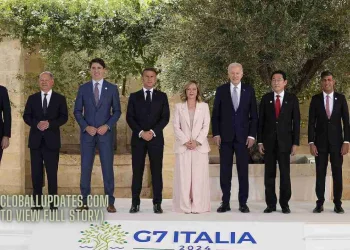It’s opening day, so put on your baseball cap, get your mitt, and grab some Cracker Jack!
The 2023 season of Major League Baseball will begin on Thursday with faster games, larger bases, and the return of many of the sport’s biggest stars following significant 2022 campaigns (the Yankees’ Aaron Judge), exciting World Baseball Classic appearances (the Angels’ Shohei Ohtani and Mike Trout), and lengthy PED suspensions (the Padres’ Fernando Tats Jr., as of mid-April).
Not certain what to look for? Here’s a quick guide to four narratives to keep in mind as you head to the stadium this spring:
Three significant rule modifications are intended to quicken the game.
The fall before last, league officials introduced a number of rule modifications intended to shorten games and reduce injuries. According to league officials, the wider bases will decrease collisions and increase thefts. Also, the MLB has forbidden infield “shifts” in which infielders pack one side of the bases against a batter who prefers that side.
But the most significant is the pitch clock. This season, every pitch will be timed (20 seconds with runners on base, 15 if the bases are empty). The batter must be in the batter’s box with eight seconds remaining or a strike will be called; the pitcher must begin his motion before the clock strikes 0 or a ball will be called.
Imagine a pitch clock violation occurring at the most dramatic moment possible – a tied game, the bottom of the ninth, with bases loaded, two outs, and a full count — imagine the outrage if a game were decided in this manner!
The exact same thing happened in February during a spring training game between the Atlanta Braves and the Boston Red Sox, leaving batter Cal Conley laughing in bewilderment as the game ended in a tie. Indeed, there was chaos.
Nonetheless, the pitch clock will be utilised during the regular season. According to MLB officials, the clock helped decrease the length of minor league games by 26 minutes and resulted to an increase in stolen bases. Similar findings would undoubtedly be welcomed in the big leagues, where the average game now lasts more than three hours.
Is this the year for the San Diego Padres?
It was supposed to be the Padres’ year last season. And, to San Diego’s credit, they came close: The Padres won 89 games and qualified for the playoffs, where they defeated the Mets and the Dodgers (extra tasty) en way to the National League Championship Series (NLCS) before losing to the Phillies.
Without their All-Star shortstop, Fernando Tats Jr., who missed the whole 2022 season due to a broken wrist and an 80-game PED sentence that began in August, this was a courageous effort. Tats led the National League in home runs the previous season with 42; it was impossible to replace him, even with the midseason blockbuster trade for the Nationals’ rookie power hitter Juan Soto.
Tats is now healthy and will be able to play for the Padres beginning on April 20. Tats is now playing for the Triple-A affiliate of the Padres, the El Paso Chihuahuas. “I feel like I’m ready right now,” he stated this week. “If it was go day tomorrow, I would have been ready.”

Before adding four-time All-Star Xander Bogaerts in the offseason, the Padres roster already featured big bats in Geovany Soto and Manny Machado. His return will be a significant boost for the team. That’s an incredible lineup, and it could be the key to San Diego’s first World Series championship.
How will Aaron Judge follow up his record-breaking season of home runs?
What a pleasure it was to see the incredible New York Yankees slugger Aaron Judge end the previous season by chasing home run number 62 and breaking the American League record. Many tuned in to Yankees broadcasts in the hopes of seeing the record-breaking home run, reviving the old-school national fascination with home run chases.
As we look forward to this season, let’s be honest: He won’t repeat his feat (probably). Nonetheless, if Judge can maintain his health, he should be able to smash at least 40 home runs, and 50 would put him in elite company.
His Yankees need it. Even though they are annual postseason contenders, they have not participated in the World Series since 2009. There are numerous explanations for their failure to reach the World Series, with poor performance at crucial moments being the most persuasive. Yet, the fact remains that, despite possessing the necessary tools, they have not succeeded.
Not to mention that New York’s most frequent playoff foe in recent years, the Houston Astros, are fresh off their own World Series victory and appear prepared to be Yankee killers once again.
Will the Angels’ star power be sufficient to propel them into the postseason?
In a sport where household names are a vanishing breed, the Los Angeles Angels boast not one but two: three-time MVP Mike Trout and Babe Ruth-comparison Shohei Ohtani, an exciting two-way talent (which is, amazingly, not really that crazy of a comparison).
Despite this, the Angels have never finished above.500, and they have missed the postseason every year since 2014, giving them the dubious distinction of baseball’s longest active postseason drought (tied with Detroit).
Still, the World Baseball Classic served as a reminder of how terrific these two players can be with the must-see game-deciding showdown between Ohtani on the mound for his native Japan and Trout at the plate for the United States (Ohtani got the clutch K, and Japan won, 3-2.)














































